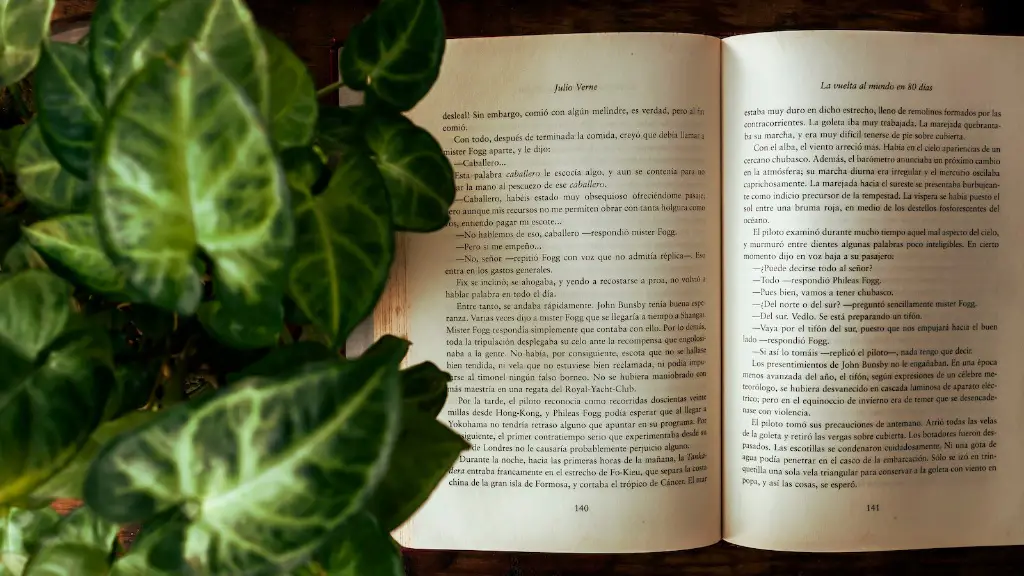Analysis
Annotating poetry can be an enjoyable activity. It allows readers to gain deeper insight into the work, to better understand its structure, and to appreciate its elements of meter, rhyme, and tone. Annotating involves close reading and careful analysis of each line, examining the tropes, figures of speech, and themes expressed within the poem. Annotation helps to make meaning of a poem, and can be a great way for readers to engage with literature in new ways.
Techniques
When annotating poetry it is important to keep track of the various elements of the work. It is helpful to use the acronym LUCK to categorize these elements. L stands for Line, U stands for Unifying Terms, C stands for Connotations, and K stands for Keywords. These categories form the basis for an annotation strategy that allows readers to draw meaning from the poem.
L- Line: When dealing with a poem, it is necessary to pay special attention to each line. Analyzing each line helps to uncover the underlying themes, symbols, and ideas. It is helpful to highlight or underline key words and images in the poem, as this will help the reader to better piece together the poem’s meaning.
U- Unifying Terms: Look for words or phrases that appear multiple times throughout the poem. These words may hint at the poem’s main idea or theme. It is important to consider what kind of impact these words have on the poem, as well as how they contribute to its overall message.
C- Connotations: Pay attention to the connotations of various words used in the poem. Words can evoke different emotions, feelings, and memories and these can be used to draw out the deeper levels of meaning in a poem.
K- Keywords: Search for important words or passages that illustrate or emphasize a particular point in the poem. These words might act as a window into the poem’s deeper meaning and can provide insight into its true message.
Exercises
Once the reader is familiar with the basic techniques of annotation, they can begin to explore more challenging poems. It is important to practice annotation in a variety of ways in order to develop a greater understanding of the process. Here are some useful exercises to try:
1. Highlighting: In this exercise, the reader should highlight any words or phrases that stand out to them. This can help to reveal a poem’s key themes or messages.
2. Imagery: Note any images or symbols that appear in the poem. These can often reveal hidden meanings in the poem, as well as providing insight into the poem’s author.
3. Close reading: Look closely at each line and try to uncover the poem’s underlying meaning. Ask questions about the words and phrases used, and consider how these contribute to the poem’s overall message.
4. Writing: Use the notes taken while annotating the poem to write an essay or analysis of the poem’s meaning. This can help to reinforce the reader’s understanding of the poem and its themes.
Groups
Annotating poetry can also be quite enjoyable in a group setting. It allows readers to share ideas, discuss possible interpretations, and learn from each other’s insights. Group annotation can be a great way to engage a class of students in a poem’s meaning. Here are some tips for a successful group annotation exercise:
1. Divide the poem into ‘stations’. Assign each member of the group to a station and have them annotate the poem together. This encourages collaboration and allows each member of the group to learn from each other.
2. Create a discussion. After the group has worked through their annotations, they should engage in an open discussion about the poem’s meaning. This allows the group to debate the various interpretations and consider how each element of the poem contributes to its overall message.
3. Share insights. Encourage the group to share their insights and opinions. This allows each member of the group to draw their own conclusions and better understand the poem.
Activities
Annotating poetry can be a fun and engaging activity, especially if it is practiced using the right tools and techniques. Once the reader is familiar with the basics of annotation, there are a number of activities and games that can be used to further practice and reinforce the skills. Here are some suggestions:
1. Mad Libs: Create a mad lib version of a classic poem. Assign each member of the group a different word or phrase from the poem and have them fill in the blanks to create a new version.
2. Vocabulary Match: Create a vocabulary list and have the group match words to their definitions. This helps to reinforce the reader’s understanding of the poem’s meaning and allows them to identify the various nuances of each word.
3. Word Jumble: Scramble the words of a poem and have the group unscramble them. This can help to uncover hidden meanings and reveal new perspectives on the poem.
Creative Writing
Annotating poetry can be a great way to inspire creativity. By taking notes and closely analyzing the hidden messages of a poem, readers can gain insight into the author’s intentions and use this to fuel their own writing projects. For those looking for a creative outlet, here are some ideas for incorporating annotation into creative writing projects:
1. Brainstorming: Use the notes taken while annotating a poem to brainstorm ideas for a story or essay. Use the poem’s images, symbols, connotations, and themes to come up with new ideas.
2. Writing in Poetic Verse: Instead of writing in prose, write a story or essay in verse. Incorporate the structure, imagery, and tone of the poem into the writing to create a unique work of literature.
3. Compare and Contrast: Write a comparison essay between two poems. Use the various notes taken while annotating to create a thorough comparison that takes into account the various elements of each poem.
4. Dialogue Exercise: Use the poem to create a fictional dialogue between two characters. This can help to explore the poem’s themes from a different perspective and open up new avenues for interpretation.
Interpretation
Annotating poetry can be a great way to draw out a poem’s meaning and uncover its deeper layers of symbolism. By closely analyzing each line and keeping track of the poem’s images and terms, readers can gain deeper insight into the poet’s intentions and uncover hidden themes and ideas. Annotation can also be a great way to engage with literature in new and creative ways, as it encourages readers to think critically and explore the poem in unique ways.

